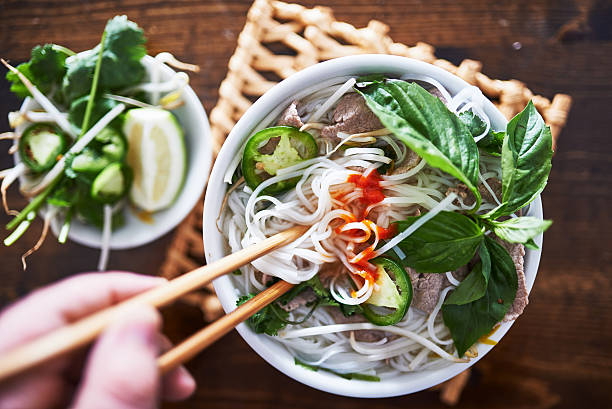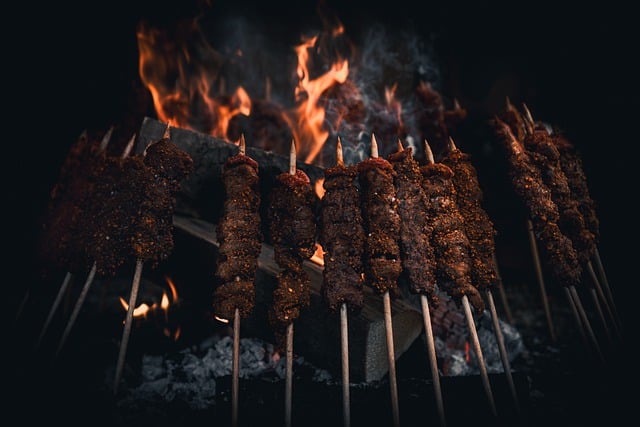Noodle Nirvana: The Art of Hand-Pulled Perfection
Slurp your way into culinary bliss with the mesmerizing world of hand-pulled noodles. This ancient technique, steeped in tradition yet thriving in modern kitchens, transforms simple dough into silky strands of deliciousness. From street-side stalls to high-end restaurants, hand-pulled noodles are captivating food lovers worldwide. Join us as we unravel the secrets behind this labor-intensive craft and discover why these noodles are worth every stretch.

A Texture Like No Other
The magic of hand-pulled noodles is in their texture. Unlike their machine-made counterparts, these noodles boast a springy, elastic quality that sets them apart. Each bite offers a satisfying chew, with a smoothness that allows them to soak up flavors beautifully. The continuous stretching process aligns the gluten strands in the dough, resulting in a noodle that’s both tender and resilient. This unique texture is what makes hand-pulled noodles the perfect vehicle for a variety of sauces and broths. Whether swimming in a rich, savory soup or tossed in a spicy stir-fry, these noodles maintain their integrity while harmonizing with the dish’s flavors. It’s this textural perfection that keeps noodle enthusiasts coming back for more, craving that distinctive mouthfeel that only hand-pulled noodles can provide.
Regional Variations and Global Adaptations
While hand-pulled noodles have their roots in Chinese cuisine, particularly in the northwestern regions, they’ve found their way into kitchens around the world. In Lanzhou, China, the birthplace of lamian, noodles are served in a clear beef broth with radishes and chili oil. Travel to Xi’an, and you’ll find biang biang noodles, wide, belt-like strands often served with spicy sauces. In Japan, ramen shops have embraced the technique, offering tsukemen with thick, chewy noodles perfect for dipping. Western chefs, too, have fallen under the spell of hand-pulled noodles, incorporating them into fusion dishes that blend traditional techniques with modern flavors. From New York to London, innovative cooks are stretching the boundaries of what’s possible with these versatile strands, creating new taste sensations that honor the noodles’ rich heritage while pushing culinary boundaries.
The Science Behind the Stretch
The art of hand-pulling noodles is underpinned by fascinating food science. The key lies in the development of gluten, the protein network that gives dough its elasticity. As the dough is worked, gluten strands align and strengthen, creating the characteristic chewiness of hand-pulled noodles. The addition of alkaline salts, such as potassium carbonate or sodium carbonate, further enhances this process, giving the noodles their signature springiness and yellow hue. Temperature and humidity also play crucial roles; masters of the craft know exactly how warm the dough should be and how much moisture is needed for the perfect pull. This delicate balance of ingredients and technique is what transforms a simple mix of flour and water into strands of noodle perfection. Understanding these scientific principles not only deepens appreciation for the craft but also helps aspiring noodle-makers hone their skills.
From Street Food to Gourmet Dining
Hand-pulled noodles have made an impressive journey from humble street food to the menus of high-end restaurants. This evolution reflects a growing appreciation for artisanal food crafts and the unique flavors they bring to the table. In bustling Asian markets, you can still find noodle masters performing their craft in open-air stalls, serving steaming bowls of noodle soup to hungry patrons. But now, these noodles are also gracing the plates of Michelin-starred establishments, where chefs are elevating the humble noodle to new gastronomic heights. Luxury ingredients like truffles, foie gras, and premium seafood are being paired with hand-pulled noodles, creating dishes that are both comforting and refined. This culinary crossover has introduced hand-pulled noodles to a wider audience, cementing their place in the pantheon of great global foods.
Noodle Know-How: Tips and Trivia
-
The dough for hand-pulled noodles typically rests for several hours or overnight to develop the perfect texture.
-
Experienced noodle masters can create up to 16,384 strands from a single piece of dough through repeated doubling.
-
The characteristic ‘thwack’ sound of the noodles hitting the counter helps to align the gluten strands.
-
Hand-pulled noodles cook much faster than dried noodles, often requiring only 30 seconds to 1 minute in boiling water.
-
The length of hand-pulled noodles is said to symbolize longevity in Chinese culture.
-
Some noodle shops use a blend of different flours to achieve the ideal texture and flavor.
As we’ve seen, hand-pulled noodles are more than just a meal; they’re a culinary art form that engages all the senses. From the hypnotic dance of their creation to the satisfying slurp of their consumption, these noodles offer a unique gastronomic experience. Whether you’re savoring them in a traditional setting or exploring innovative new preparations, hand-pulled noodles represent the perfect blend of tradition and innovation in the culinary world. So the next time you’re faced with a bowl of these stretchy strands, take a moment to appreciate the skill, science, and centuries of tradition that have gone into creating this noodle nirvana.





